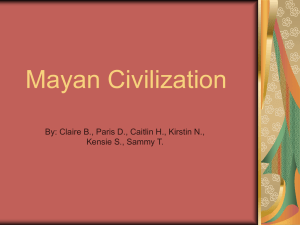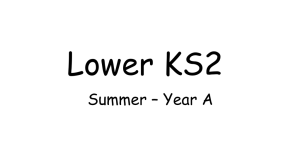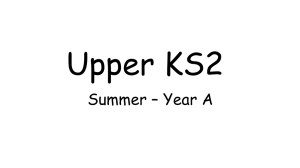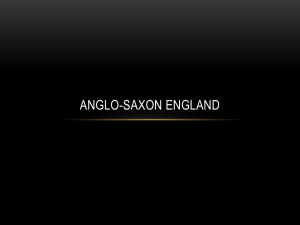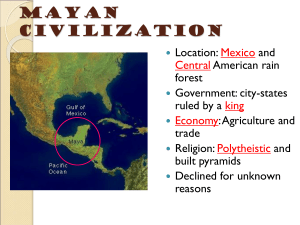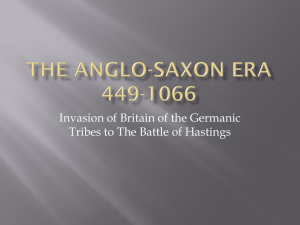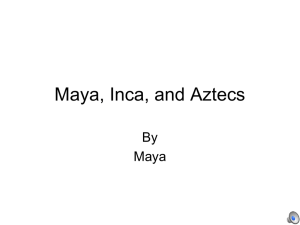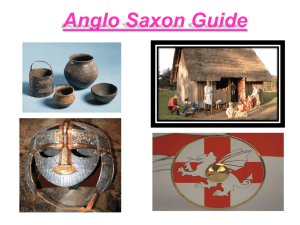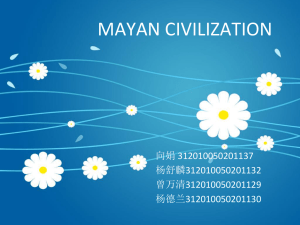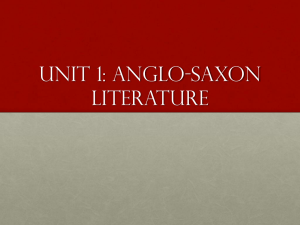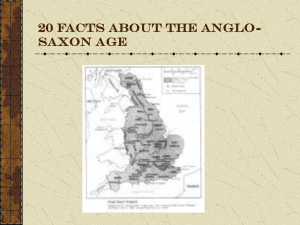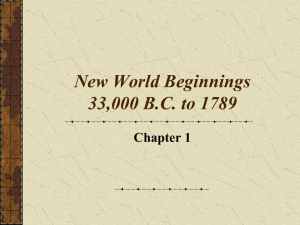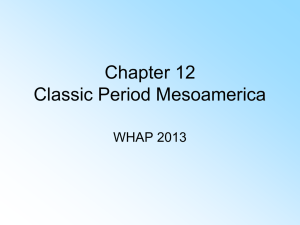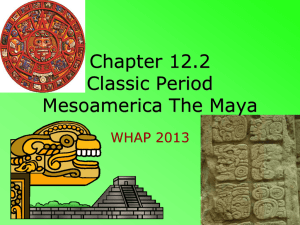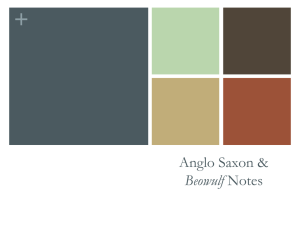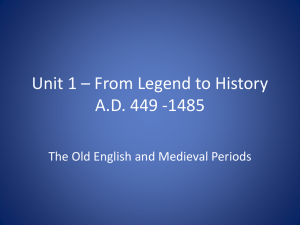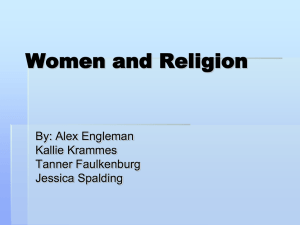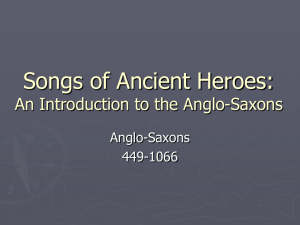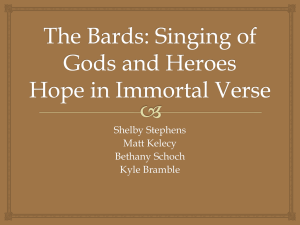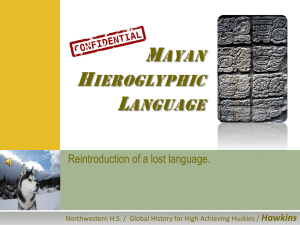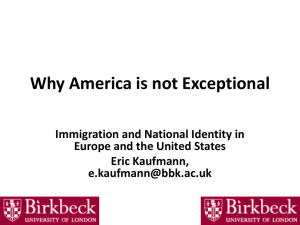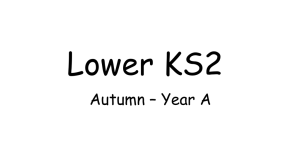UKS2 Year A Spring
advertisement
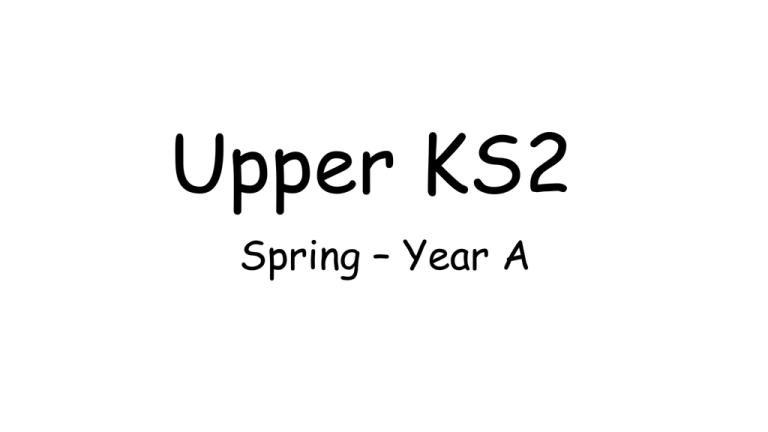
Upper KS2 Spring – Year A Science Year 5: Could you be the next CSI investigator? Year 5: Science and Art Knowledge, Skills and Understanding Year 5 Science: Materials • • • • • • • • • • • • • • Art & Design Can they explore different ways to test an idea and choose the best way, and give reasons? Can they vary one factor whilst keeping the others the same in an experiment? Can they explain why they do this? Can they plan and carry out an investigation by controlling variables fairly and accurately? Can they make a prediction with reasons? Can they use information to help make a prediction? Can they use test results to make further predictions and set up further comparative tests? Can they explain (in simple terms) a scientific idea and what evidence supports it? Can they present a report of their findings through writing, display and presentation? Can they explain how changes can result in the formation of new materials? Can they explain what an irreversible change is and give examples? Can they explore the work of famous chemists? (Lavoisier, Priestley, Spencer Silver or Ruth Benerito) Can they distinguish metals from other solid materials by describing metallic properties? Can they explain why some metals rust? Can they explain what happens when vinegar or bicarbonate of soda is added to materials? • • • • • • • • • Do their sketch books contain detailed notes, and quotes explaining about items? Do they compare their methods to those of others and keep notes in their sketch books? Do they combine graphics and text based research of commercial design, for example magazines etc., to influence the layout of their sketch books. Do they adapt and refine their work to reflect its meaning and purpose, keeping notes and annotations in their sketch books? Can they create work which is open to interpretation by the audience? Can they include both visual and tactile elements in their work? Can they combine pattern, tone and shape? Can they overprint using different colours? Do they look very carefully at the methods they use and make decisions about the effectiveness of their printing methods? Year 5 Challenging • • • Can they make a prediction which links with other scientific knowledge? Can they identify the key factors when planning a fair test? Can they explain how a scientist has used their scientific understanding plus good ideas to have a breakthrough? • • Can they identify where changes in state take place and explain these? Can they give a clear description of what happens when a material is burnt or heated as in cooking? Can they give examples of how chemical changes can impact on our lives? Can they suggest ways to separate mixtures based on what they know about certain materials? • • © Focus Education 2014 3 Year 5: Could you be the next CSI investigator? Science Y5: Properties and Changes of Materials • • • • • • compare and group together everyday materials on the basis of their properties, including their hardness, solubility, transparency, conductivity (electrical and thermal), and response to magnets know that some materials will dissolve in liquid to form a solution, and describe how to recover a substance from a solution use knowledge of solids, liquids and gases to decide how mixtures might be separated, including through filtering, sieving and evaporating give reasons, based on evidence from comparative and fair tests, for the particular uses of everyday materials, including metals, wood and plastic demonstrate that dissolving, mixing and changes of state are reversible changes explain that some changes result in the formation of new materials, and that this kind of change is not usually reversible, including changes associated with burning and the action of acid on bicarbonate of soda WOW: Burn a number of different materials, examine the remains and see whether the original item can be identified. LC1 Can you think of five materials that can be changed and reversed and five that cannot? LC2 How have scientists made use of changes to create materials that make our lives easier, e.g. cling film? LC3 Which materials dissolve and evaporate and why can this sometimes be an important quality in those materials? LC4 How are reversible and irreversible changes important to forensic scientists? LC5 How could you solve a crime by using forensic evidence? LC6 What is bicarbonate of soda and what impact does it have on different materials? LC7 Using finger prints as well as hand and foot prints, can you create an interesting piece of art work that has interesting design features? LC8 Reflection: Create your own version of ‘Brainiac’ and present it to Key Stage 1 children. Working Scientifically: carry out tests to answer questions such as ‘Which materials would be the most effective for making a warm jacket, for wrapping ice cream to stop it melting, or for making blackout curtains?’ They might compare materials in order to make a switch in a circuit. They could observe and compare the changes that take place, for example when burning different materials or baking bread or cakes. Literacy Link: There are many opportunities to make use of a range of literacy skills in this LC. For example there are opportunities in LC2 to find out about a particular scientist’s work, e.g. Ruth Benerito or Spencer Silver. © Focus Education 2014 Creative Art Link: LC7 provides opportunities for children to consider the work of Salvador Dali and then create their own work using footprints, handprints and fingerprints. The Jacqueline Lemonade Davies Crime Crime in The Queen’s Court Nancy Drew 4 History Year 6 History Knowledge, Skills and Understanding breakdown Chronological understanding Knowledge and interpretation Historical enquiry • Can they say where a period of history fits on a timeline? • Can they place a specific event on a timeline by decade? • Can they place features of historical events and people from past societies and periods in a chronological framework? • Can they summarise the main events from a specific period in history, explaining the order in which key events happened? • Can they summarise what Britain may have learnt from other countries and civilizations through time gone by and more recently? • Can they describe features of historical events and people from past societies and periods they have studied? • Can they recognise and describe differences and similarities/ changes and continuity between different periods of history? • Can they look at two different versions and say how the author may be attempting to persuade or give a specific viewpoint? • Can they identify and explain their understanding of propaganda? Year 6 (Challenging) • Do they appreciate that some ancient civilizations showed greater advancements than people who lived centuries after them? • Can they suggest relationships between causes in history? • Can they trace the main events that define Britain’s journey from a mono to a multi-cultural society? © Focus Education 2014 • Can they suggest why there may be different interpretations of events? • Can they suggest why certain events, people and changes might be seen as more significant than others? • Can they pose and answer their own historical questions? 6 Year 6: Who were the Mayans and what have we learnt from them ? KS2 History. A non European society that provides contrast with British history - Mayan civilization around 900AD WOW: Children to learn about the traditional game ‘pok a tok’ and recreate it, using resources available to them. LC1 Who were the Mayans and where did they live? LC2 What evidence do we have that the Mayans were an advanced civilization? LC3 What have the Mayan civilization in common with space travel? LC4 What can we learn from the way they built their pyramids? LC5 What do we know of the rituals carried out by the Mayan civilization? LC6 Why was the Sun an important feature in Mayan life? LC7 What caused the Mayan Civilization to disappear? LC8 Reflection: Create a television documentary to explain to everyone about the life of the Mayans, focusing on traditions, culture, sport and their knowledge. Literacy Link: Research opportunities arise in LC1, LC2, LC3, LC5, LC6 and LC7. The main issue is to ensure that the outcomes from the research is different from each LC. There are several opportunities for pupils to develop their oracy skills, using different talk genre. Numeracy Link: There are many opportunities for children to work out dates and period of time. In addition, the research work should lead to the need to use tables and charts. Creative Art Link: LC4 provides opportunities for children to design and make pyramids in the style of the Mayans. IT Links: The reflection LC provides opportunities for groups of children to present their ideas using their IT skills. The Mayan Civilization © Focus Education 2014 Elizabeth Scholl Mayan Civilization Moments in History Shirley Jordon 7 Year 5 History Knowledge, Skills and Understanding breakdown Chronological understanding • • • Can they use dates and historical language in their work? Can they draw a timeline with different time periods outlined which show a range of information, such as, periods of history, when famous people lived, etc.? Can they use their mathematical skills to work exact time scales and differences as need be? Knowledge and interpretation • • • • • Can they describe historical events from the different period/s they are studying/have studied? Can they make comparisons between historical periods; explaining things that have changed and things which have stayed the same? Can they explain the role that Britain has had in spreading Christian values across the world? Do they appreciate that significant events in history have helped shape the country we have today? Do they have a good understanding as to how crime and punishment has changes over the years? Historical enquiry • • Can they test out a hypothesis in order to answer a question? Do they appreciate how historical artefacts have helped us understand more about British lives in the present and past? Year 5 (Challenging) • Can they create timelines which outline the development of specific features, such as medicine; weaponry; transport, etc. • Do they appreciate how plagues and other major events have created huge differences to the way medicines and health care was looked at? • Can they research the life of one person who has had an influence on the way Great Britain is divided into four separate countries? Year 5 Design Technology Knowledge, Skills and Understanding breakdown for Year 5 • • • Can they think of some ideas of their own? Can they explain what they want to do? Can they use pictures and words to plan? • • • • Can they explain what they are making? Can they explain which tools are they using? Can they describe how something works? Can they talk about their own work and things that other people have done? © Focus Education 2014 • • • Can they talk with others about how they want to construct their product? Can they select appropriate resources and tools for their building projects? Can they make simple plans before making objects, e.g. drawings, arranging pieces of construction before building? 8 Year 5: Were the Anglo-Saxons really smashing? KS2 History: Britain’s settlements by Anglo-Saxons and Scots - Anglo-Saxon invasions; settlements; kingdoms; names and places; art and culture and Christian conversion Literacy Link: LC1 – Opportunities for research about Anglo-Saxons – focusing on the impact on British history. LC6 – Opportunities for distinctive research on famous Anglo-Saxons as well as Alfred the Great. During LC3 children will focus specifically on common names and words we use today that derive from Anglo-Saxon times. WOW: This LC will start with a simulated dig with children having to work out what certain artefacts would have been used for. LC1 Who were the Anglo-Saxons and how did they influence our life today? LC2 How did the Anglo-Saxons bring law and order to Britain? LC3 What evidence do we have today that the AngloSaxons were ever here in the first place? LC4 Which Anglo-Saxon Christian symbols remain with us today? LC5 Can you create your own Anglo-Saxon art focusing on tessellations? LC6 Who were the famous Anglo-Saxons and why was Alfred so ‘great’? LC7 Can you work as a group to create a model AngloSaxon settlement? LC8 Reflection: Using your model settlement, can you produce a filmed documentary about Anglo-Saxon life? Creative Art Link: During LC5, children will design and make their own jewellery based on the patterns commonly used by Anglo-Saxons. Creative Art Link: During LC7 children work as a group to design and make an Anglo-Saxon settlement having carried out research in the first instance. IT Link: During the reflection children will simulate a film of life in an Anglo-Saxon settlement. © Focus Education 2014 Beowulf Kevin CrossleyHolland The Lantern Bearers Rosemary Sutcliff 9
